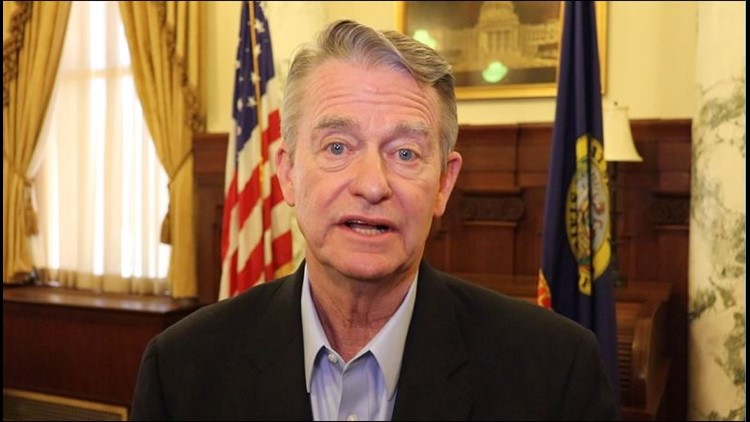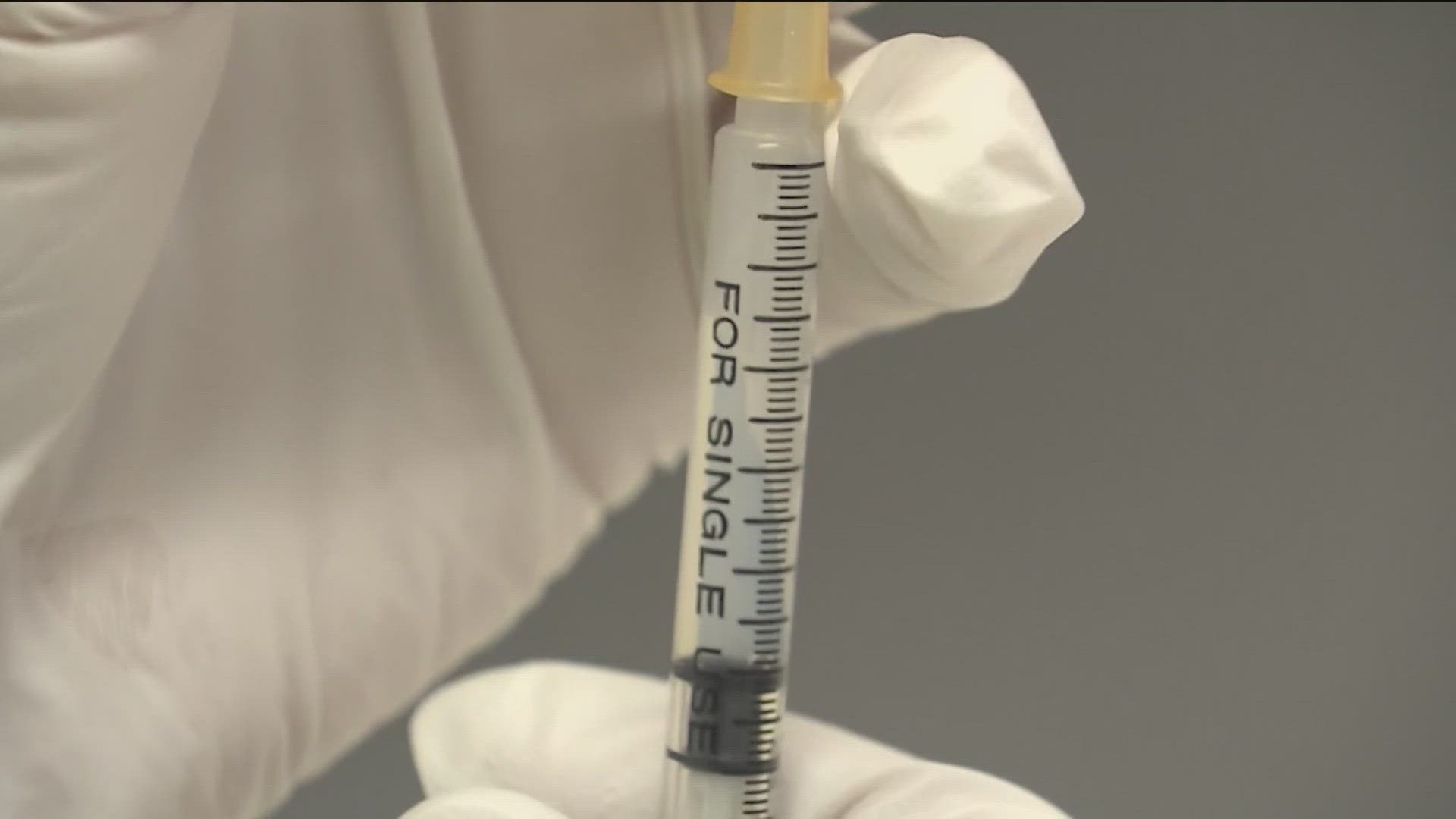BOISE, Idaho — This article has been updated to correct the target date for the start of Stage 2 under the governor's four-stage reopening plan; it's May 16.
In the months ahead, as Idaho moves through the coronavirus pandemic, “It will be more about staying safe than it will be about staying home,” Gov. Brad Little said.
Little, responding to questions from across the state on Thursday evening on a live broadcast of “Idaho Reports” on Idaho Public Television, told a viewer from Kellogg that social distancing measures will be around for the long term. “We are not flipping the switch and going back to the status quo before,” he said. “We can’t do that. No state can do that, no country can do that, until we have either a therapeutic or we have a vaccine.”
“At that time, particularly when we have a vaccine, we will be back to our old Idaho,” Little said. “But I want to get us as close to that as possible as fast as possible, so that our economic recovery can rebound, we can go back to that and that people stay safe.”
The governor’s comments came the evening after he unveiled a four-stage plan for reopening Idaho’s economy in phases, starting after his current statewide stay-home order expires on April 30. In the first stage, starting May 1, most retail stores and houses of worship could reopen, as long as they follow strict social-distancing rules.
Asked the difference between houses of worship and other large venues, Little said, “Well, houses of worship by their very nature are places where they’re fairly well organized, it’s generally the same people going there on a regular basis, so they have time to sit down and plan for what they’re doing — what their spacing is, how they come in, how they go out, how they meet each other, where the seating is.”
“A large venue where you have a different group of people at every time, you don’t have that kind of control,” he said, “and generally they’re much larger.”
In the second stage of the governor’s plan, restaurants, gyms and hair salons could reopen with approved social-distancing plans; that would start May 16, if the state sees continued progress in its infection numbers, testing and other metrics. The same caveats apply to moving at two-week increments into the next phases, with Stage 3 allowing gatherings of between 10 and 50 people that allow for appropriate social distancing measures; and Stage 4, starting June 13, allowing bars, nightclubs and large venues like movie theaters to reopen with appropriate social distancing measures in place.
Darrel Anderson, CEO of Idaho Power and the newly named chairman of the governor’s Economic Recovery Working Group, joined Little on the program to field questions posed by host Aaron Kunz.
“The governor’s plan is a measured plan,” Anderson said. “It’s science based, and it’s a measured approach. … The good news about the plan is that it provides some benchmarks, assuming metrics are met.”
Anderson said his panel will work on three economic recovery goals: First, restoring consumer and employee confidence; then, building stability and growth for the mid-term “so we don’t backslide;” and thirdly, business promotion and attraction aimed at “getting Idaho back to where it was 45, 60 days ago, when we were leading the charge on fastest state in the country in growth.”
“I think that the governor’s plan is a big step in moving that direction in a safe way,” Anderson said.
Asked if the metrics he’s outlined are achievable for the state, Little said, “Yes, we believe they are. They are ambitious, but not overly ambitious.”
RELATED: 'It's a little disrespectful': Idaho Gov. Little urges continued compliance with stay-home order
Questioned about his message for businesses that aren’t in the earlier stages of his plan, like movie theaters or concert venues, Little said, “I am incredibly sympathetic with anybody that’s been dislocated by the pandemic that the whole word is suffering with. But there is logic to what we’re doing, and the logic is in two-week increments. We have to do it in two-week increments, because … of the incubation period of the COVID-19 virus. So anything we do to open things up or loosen things up, we’ll see the result in 14 days.”
He added, “That’s the recommendation from CDC and the White House, and that’s the recommendation.”
Little said he’s sorry for Idahoans who’ve experienced delays getting unemployment benefits or reaching the state Department of Labor. “Seventy days ago, we were bragging about unemployment, and we’ve gone to 100,000 people unemployed in this very short amount of time,” he said. “You can imagine what kind of workload that is. … I am very sorry about the people that are having trouble getting there, but to my knowledge, we’re doing everything we physically can, as fast as we can.”
Asked about protests of his order, Little said, “I understand people protesting, but they shouldn’t be putting their friends and neighbors at risk by violating what 99% of the population of Idaho are complying with.”
When a viewer asked why Little hadn’t denounced Rep. Heather Scott for calling him “Little Hitler” and comparing the governor’s stay-home order to Nazi genocide, tactics the viewer called “very dangerous and unsafe for peaceable citizens,” Little demurred.
“I have to keep focused on what’s important, and that’s restoring economic prosperity and keeping Idaho people safe,” he said. “There are a lot of people that want to be a distraction at this point in time, and frankly, ignoring them is sometimes the best action.”
Betsy Z. Russell is the Boise bureau chief and state capitol reporter for the Idaho Press and Adams Publishing Group. Follow her on Twitter at @BetsyZRussell.
If you enjoy reading articles like this one from our partners at the Idaho Press, please consider subscribing to them for newspaper delivery or digital access to help ensure stories like this are told.
More from our partner Idaho Press: Idaho's new ban on gender changes to birth certificates draws legal fire
Facts not fear: More on coronavirus
See our latest updates in our YouTube playlist:



